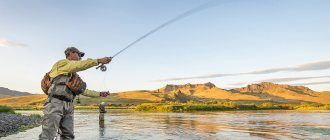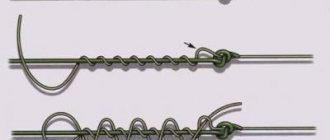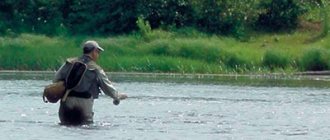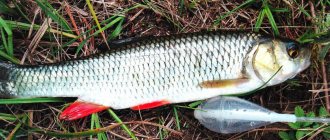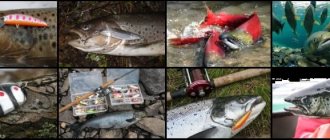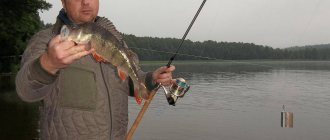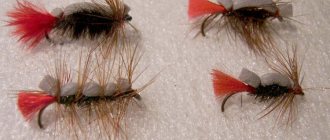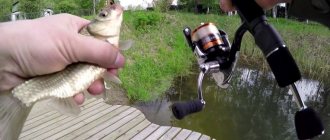suhie nahlystovye mushki

Fly fishing fly
Tying dry flies for fly fishing is increasingly gaining popularity. With their help, fishing becomes an exciting entertainment. The imitation of adult insects and bright colors on the water surface looks impressive and the fish certainly notice this. Such flies are kept afloat by the wings and tail, so during tying, these parts of the fly should be given special attention. To keep the structure from being heavy, craftsmen use small aluminum wire hooks.
Basic manufacturing rules
The eye of the hook should be bent upward. In this case, hooking the fish will be more convenient. The leash itself needs to be slightly recessed so that it is invisible. Do not forget that before forming the fly, the hooks must be degreased. It is better to use fluorcarbon fishing line in this matter. You should not press the leash too much, otherwise the hook ring will be noticeable.
During knitting, special attention should be paid to proportions. If you don’t follow them, the fly will turn out to be either very small or large and will sink or fall on its side. The length of the legs of the product should be equal to the length of the hook. Let's look at variations of knitted flies for fishing.
Components
You need to start tying a fly by understanding what parts it consists of. A dry fly has a body, a tail, wings, and a brush. Not all flies have all these components, most dry flies are streamlined and do not have a tail or wings. In a dry fly, the main thing is not realism, but presentation, i.e. presentation.
Among other things, the “correct” front sight must have proportions. For a dry fly:
- The length of the tail should be equal to the length of the body.
- The height of the wings is equal to the length of the hook forearm.
Watch the video to see how dry fly tying tools are used:
Body
A ball of wool, fluff or synthetics is used as a body; this is called dubbing. It is screwed onto the shank of the hook using a mounting thread. In order for the fibers to stick to the fore-end, a special wax is used, and the “touch” method is used. The wax is evenly applied to the thread, a little dabbing is applied to the thread and wound. A small amount of dabbing enters, which makes the body thin and fluffy, this is important for small flies.
If you just do the dabbing on the thread and then on the shank, then the body will be less fluffy. Natural dubbings are wool, fluff, and hair from various animals. An ideal option for dry flies is mole hair. The wool of other animals is also used - beaver, rabbit, squirrel, muskrat, etc. But at present, synthetic materials have significantly replaced animals. They are more obedient in operation and do not change color in water.
By mixing different dubbings, new options are obtained. In a dry fly, the body is ballast, so they try to tie it as thin as possible.
Tail
The tail is the element with which the fly floats on the water. They use guard hairs from the tails of marmots, minks, peacock feathers, rooster feathers from the back or neck, and coarse hair from deer fur. The material must be tough.
Wings
Wings - must ensure the correct landing of the fly on the water and maintain balance. The wings must transmit light and be visible to the fly fisherman. For knitting wings, tubular hair from the back of deer, roe deer, elk, and bird feathers are used.
Yorshik
Not all dry flies float. With the help of a brush, it seems to stand on the water. The main material for making a brush is rooster feathers from the nape or roe deer fur, wrapped around the forearm. A rooster's feather from the scruff is called a carding feather.
Top 5 baits from well-known and trusted manufacturers
1. Jensen. (Denmark) E-12 Olive
A dry fly that has long been popular. Imitates a caddisfly butterfly. The wing is made of duck feathers. Well-preserved bait after bites and an excellent swimmer. Sold in quantities of 2 pieces. The price per package is 120 rubles.
Parashute Hare's Ear Natural
A dry front sight from the same manufacturer, made using the “parachute” technique. It has excellent visibility and a rare combination of dry fly character and pop-up nymph imitation. Applicable for any reservoirs. Price for 2 flies 120 rubles.
Rusangler
Wet fly MF-Rogans Gosling . Recommended by the manufacturer for trout fishing in lakes and ponds. But brook trout, as well as peaceful fish, respond well to it. There are 2 flies in the package. Price - 120 rubles.
CAREY SPECIAL ORANGE
Wet fly. Colonel Carey's masterpiece , which is why it got its name. Imitation of large larvae. Having an orange color, it approaches the Autumn Caddisfly. Effective in fishing near the bottom. Price for 2 pieces - 110 rubles.
Another dry fly from Rusangler called Sedgehog Olive
But it can also be used wet, because it imitates a caddisfly that has just emerged from the pupa. Particularly effective in windy weather with waves on the water surface. A package of two baits costs 110 rubles.
Flies are also sold in sets. As a rule, such sets of fly fishing flies include the same types of baits.
For example, 7 nymphs Nymph Assortment from Crystal River. The cost of the set is 610 rubles.
Or a set of Classic Dry Fly Selection dry flies from the English company Fenwick, imitating adult ground insects. 7 lures in this set, recommended for beginning fly fishers, cost 339 rubles.
Features of fishing by season
Many fishermen open the grayling hunting season in early spring, after the rivers have completely opened up. In the period before spawning, usually in April, the water is already warming up, and the fish begin to feed especially actively at the surface. There are not as many insects as there are in summer, so interest in artificial flies is higher.
Spring
Spring fishing can be done with classic spinning rods and other types of fishing rods. The fly fishing technique with sinking flies and bombards is especially effective on small rivers.
Surface fishing is more effective in clear water, but not all anglers correctly determine the degree of transparency to select a suitable simulator. To avoid mistakes, you can use a proven method: go into knee-deep water. See if the toes of the boots are visible. If they are clearly visible, then flies on the surface will work. Experienced fishermen note that if suspension is present, it is better to choose models of bright colors to attract attention.
Summer
Summer hunting for grayling is still successful with light, sinking flies, if you correctly identify the places where fish accumulate. Usually these are areas with underwater vegetation, whirlpools, areas where the bottom is not visible.
Autumn
In autumn, the location of grayling changes; a period of migration begins from small bodies of water to larger ones, gradually approaching wintering areas. Fishing in streams and small rivers will be a futile activity. The duration of the fishing season significantly depends on weather and climatic conditions, but usually the bite lasts until the end of October. A special feature of fishing is the use of heavy flies that attract grayling in the water column. Surface models do not work as the fish feed at depth.
Tackle for fishing grayling with flies
The fisherman can choose the appropriate gear based on his preferences; there are no requirements for a specific type. Beginner grayling hunters are recommended to use a fly fishing rod with a simple tackle design. The presence of the basic elements: a rod, for example, a Bolognese, a reel, fishing line, bait, makes it possible to start fishing, although you cannot do without mastering the casting technique. You should not choose heavy gear, which will lead to wrist pain. The optimal average weight of the rod is 350 g plus the weight of the reel.
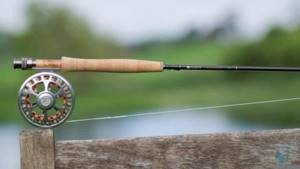
Fly fishing rod
Gear that was previously used for hunting other inhabitants of water bodies is being re-equipped for grayling fishing. The purpose of the rig is to deliver the bait to the selected location.
Before choosing a fishing rod, you should decide what kind of fish and in what conditions you intend to fish. Hunting for large specimens and the presence of underwater plants require high-quality fishing gear. It’s worth studying the TOP middle-class fly fishing rods to choose the optimal model.
Spinning rod for fly fishing
Fans of spinning fishing who know how to equip a fishing rod catch predators throughout the open water season.
It is often possible to catch fish with a fly fishing spinning rod equipped with an inertial reel and a heavy float that acts as a sinker. Notifications about bites from the float are not required; it is necessary for making long casts, as accurate as possible.
The technique of fly fishing is to imitate the behavior of insects, to which the predator must react. The art of the fisherman lies in the realism of the presentation and the skill of casting. Gambling hunting involves the use of an elongated spinning rod.
In specific situations, casting distance may vary. An important factor is the absence of interference in progress on the surface. The cutting time is determined visually.
The equipment required for spinning is unusual. In addition to a special attachment, the required elements are a fly cord, backing, and a leash.
The semi-fly fishing technique is distinguished by the provision of wiring. Fishing using the bombard method is characterized by long-distance deliveries of ultra-light bait using Sbirullino-type floats.
Ultralight spinning rods are also suitable for fishing. No special wiring is required with it; the hunter’s task is to monitor the bites and hook in time.
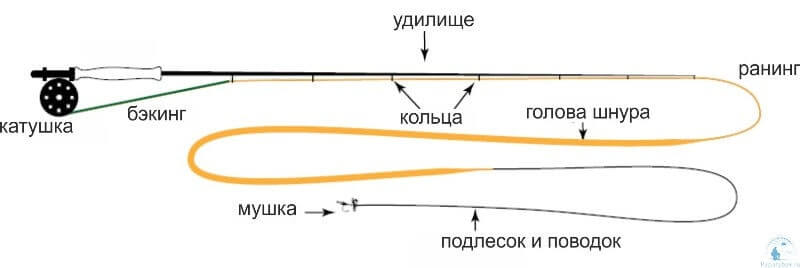
Fly fishing gear diagram
Inertia coil
Fishermen in practice use both inertial and inertialess reels. The specific choice is determined by the fishing conditions, knowledge, and preferences of the hunter. The inertial version is more often used, since a light stroke does not create noise, it is easier to release the line by pressing the reel with a finger. The inertial reel allows the bait to float freely with the current. Experienced fishermen use additional spools.
fishing line
Grayling is known for its tenacity when fishing. The fighting fish resists despite the average weight of only 250 g; it may seem to the fisherman that there is a predator of at least 1 kg on the hook. Taking into account the nature of the individual, the correct selection of strong fishing line is required. It is recommended to use the monofilament version, since the elongation is better than that of fluorocarbon or cord. This quality helps to dampen the jerking of the fish during resistance. The shock absorption factor and soft rod will not allow the catch to fall off.
The suitable diameter of the main line is 0.24 - 0.3 mm. The leash can be made of fluorocarbon, 20 cm long, with a cross-section of 0.18 - 0.2 mm.
Tackle: “sleigh”, “boat” or “torpedo”
One of the ancient fishing techniques, unfairly forgotten, although the effectiveness of the gear is still maintained at a high level in different waters. Popular names convey the appearance of the floating gear. For manufacturing, any material that does not sink in water is required. Modern fishermen often use polystyrene foam or pieces of plywood. The design can be of any complexity - “catamaran ships” are made from one or several hulls. You will need a spinning rod of increased rigidity, an inertial type reel, and leashes of different diameters in the amount of 4-6 pieces. The leashes need to be attached at a distance of about 80 cm from each other. The casting of the tackle should be far, so that nothing interferes with free movement.
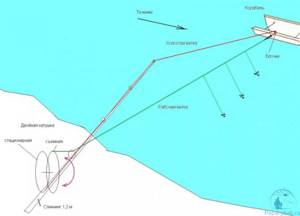
"Boat" for grayling
The floating structure floats downstream. Leads of various lengths are tied to the main strong cord, which allows all flies to touch the surface of the water. An exciting fishing method is used to catch large fish, which are usually very cautious.
Pull or bale
One of the ancient fishing techniques, feeding on the surface of a reservoir. The process involves two fishermen located on opposite banks. Everyone has a spinning rod, between which there is a fishing line, or “stave”, with long leashes, at least a meter, usually used up to three pieces. The line must be kept taut without bending.
Slow movement along the bank against the current is required. One angler is casting a fishing line, the other is fishing for a caught grayling. When dragging, when a bite occurs, you need to perform the hook synchronously. The diameter of the main line is 0.25–0.3 mm.
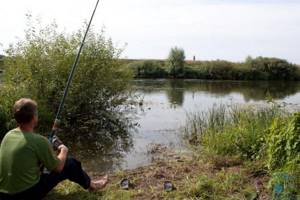
Catching with a drag
Fishing tactics
Ensuring good fishing is the behavior of the flies, which should be as realistic as possible. Using the most catchy model can be unsuccessful if a number of conditions in the fly fishing technique are not met:
- casts should be at long or medium distances, since grayling is known for its caution; it is not caught near a fisherman;
- movements in the direction and speed of the current should not be limited by the fishing line, free movement is the basis of the realism of the rafting;
- When guiding to potential prey, the cord must be tucked in, and maneuvers in the movement of the bait should be made natural.
The moment for hooking is any tension in the cord or unnatural movement of the bait, which the angler determines visually. Grayling offers strong resistance, for which you need to be prepared. Regardless of the size of the fish, the fighting qualities of the inhabitant are always at their best.
The fisherman needs to give up high-speed fishing and choose the technique of constantly holding on a tight line to tire the fish. Only after calming down, catch it in the landing net.
Features of fishing in small rivers
In cramped conditions, it is easy to alert the fish with any sudden movement or noise on the shore, which is clearly visible from under the water. Good camouflage means a lot. The cast should be made slightly above the intended habitat of the grayling, so that the presentation of the fly with the current is realistic.

Fishing for grayling from the shore
After vigorous fishing, you should no longer expect a bite in the same place. A frightened flock of relatives will probably move downstream. Accordingly, the cast should be to a new place. You can return to the old way after some time.
Hunting tactics on medium rivers
On reservoirs with plenty of room for fishing, the most successful areas will be the zones between fast and quiet water. It is recommended to take into account the natural food supply, which may interfere with hunting on artificial flies. Grayling appear on the rifts at the beginning of summer and stay almost until the beginning of autumn, but large individuals go downstream first. The best feeding areas for fish are at the end of the riffle.
Fly fishing is exciting; you need to have enough types of bait in your arsenal to experiment. Grayling, although cautious, is at times voracious, which contributes to an excellent bite.
Nuances in fishing techniques
Many novice fishermen are interested in where to start.
The basics of fly fishing say that you need to decide on the time of year, the body of water (lake, small river or fast-flowing river) and the type of fish.
And after that, choose tackle, flies, bait, etc.
Depending on the time of year, fly fishing has certain characteristics.
in spring
Artificial baits should be similar to insects that are part of the fish’s diet at a certain time of the year.
In spring, fish eat:
- worms washed from the coastal zone by spring floods;
- leeches, which during the winter attach themselves to fish standing in pits.
- The fish will not refuse bloodworms at any time of the year, so do not neglect the appropriate fly;
- caddisfly larvae, which are often found after winter. Chub and large perch can imitate this insect.
The size of parasites can reach 50 mm, but it is not necessary to use large flies for imitation.
Until the water in the reservoir warms up, the fish remains lethargic and is mainly located at depth. In accordance with this, they select equipment that should clearly react and hook even with the slightest bite.
In summer
In the summer season, no fishing technique is neglected, and it is also possible to fish using various baits:
- dry and wet flies,
- streamers,
- nymph
The main thing is to be careful and determine what type of insects predominantly lives near the pond.
in autumn
There are three main types of flies that work most effectively in the fall:
- small-sized steel-gray mayfly;
- flies imitating small black spiders;
- classic flies for fishing in the form of a caddisfly.
The choice of bait color depends on weather conditions: on sunny days, bright fly fishing flies are often used, on cloudy days, dark gray tones are preferred.
